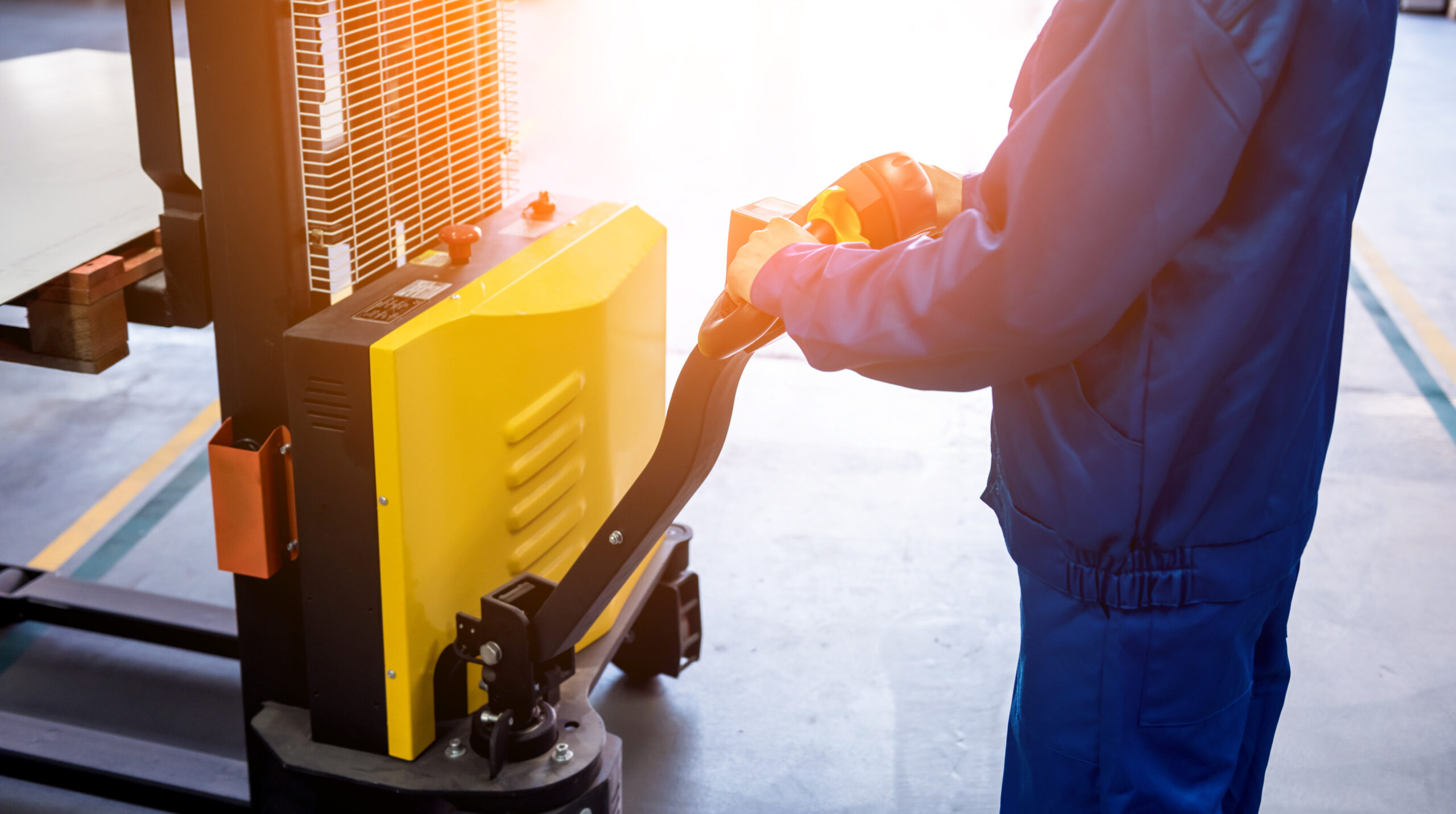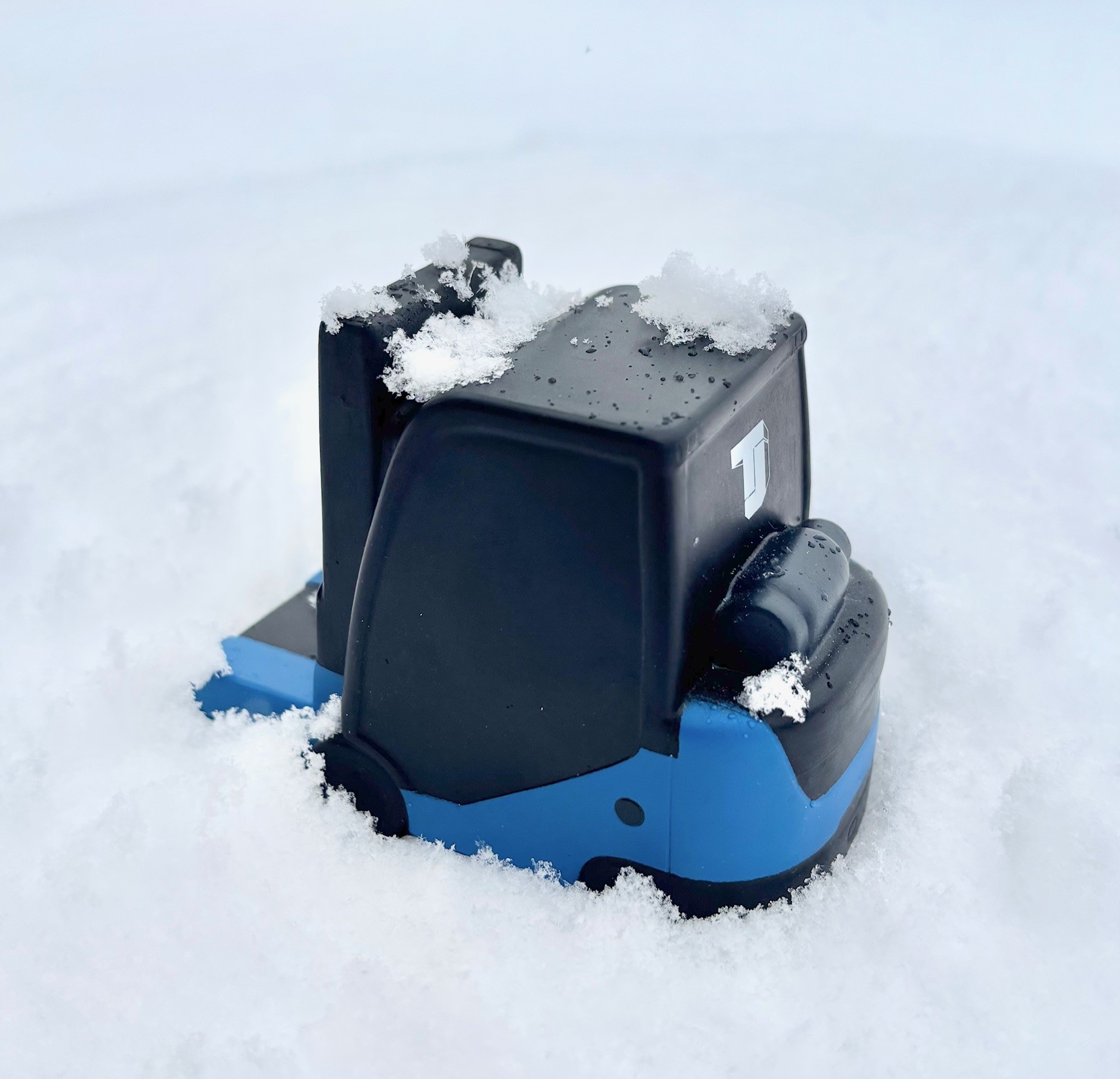When moving pallets, the question isn’t whether you need a pallet jack—it’s which kind. Both manual and electric walkies are workhorses in warehouses, distribution centers, and manufacturing plants. But they shine in different scenarios. Here’s a clear, practical breakdown to help you pick the right tool for the job.
QUICK DEFINITIONS
- Manual Pallet Jack (Hand Pallet Truck): Human-powered, hydraulic lift with a drawbar handle. Simple, durable, low cost.
- Electric Pallet Jack (Walkie Pallet Jack): Battery-powered drive and lift assist. Reduces push/pull force, increases throughput.
WHEN A MANUAL PALLET JACK WINS
Best for:
- Short runs (≤50–75 feet at a time)
- Low to moderate pallet weights (up to ~2500 lb. for easy operator use on smooth floors)
- Tight spaces and truck trailers where maneuverability matters
- Intermittent or seasonal use
- Budget-conscious operations
Advantages:
- Lowest upfront cost and minimal maintenance (grease, wheels, seals).
- No charging infrastructure needed.
- Extreme simplicity—easy to train, easy to store, fits just about anywhere.
- Great backup tool even in electric-heavy fleets.
Watch-outs:
- Operator strain over longer distances or on rough floors.
- Slower productivity for frequent moves.
- Poor performance on grades and thresholds.
Example:
A packaging cell moves finished goods 30 feet to staging, 10–15 pallets per shift. A manual jack keeps costs down without burdening operators.
WHEN AN ELECTRIC PALLET JACK PAYS OFF
Best for:
- Frequent moves, longer hauls, or high-throughput picking
- Heavier loads and floor transitions/ramps
- Multi-shift operations
- Ergonomic and safety-driven programs
Advantages:
- Speed & Throughput: Faster travel and lift reduce cycle time—great in order picking and dock work.
- Operator Ergonomics: Minimal push/pull force; reduces fatigue and MSD risk.
- Consistency: Handles grades and expansion joints better; more control under load.
- Data & Control (on many models): Speed settings, turtle mode, auto-brake, and sometimes telematics.
Battery Choices:
- Lead-Acid: Lower initial cost, proven, requires watering and charge windows.
- Lithium-Ion: Higher upfront cost, but fast opportunity charging, longer life, lower maintenance, and stable performance in cold storage.
Watch-outs:
- Higher upfront price vs. manual jacks.
- Charging & battery care—plan for outlets/chargers, battery management.
- Training—still a powered industrial truck; operators need proper training and PPE.
Example:
A grocery DC picks cases all day over 200–300 feet per run. Electric walkies decrease pick time and operator fatigue, paying back quickly in productivity.
SAFETY & ERGONOMICS: NOT OPTIONAL
Manual Jacks
- Train on proper body mechanics (neutral spine, push—don’t pull when possible).
- Limit load weights and travel distances to reduce strain.
- Watch for pinch points and foot placement near steer wheels and forks.
Electric Jacks
- Formal operator training (PIT standards) with walkie-specific hazards.
- Emphasize visibility, horn use, turning clearance, and pedestrian awareness.
- Use speed limits/turtle mode in congested aisles and on docks.
- Cold storage? Verify battery chemistry and tires rated for low temps.
PRODUCTIVITY & TOTAL COST OF OWNERSHIP (TCO)
Manual
- Lowest acquisition cost and minimal upkeep.
- Hidden costs show up as slower moves and operator fatigue—especially beyond short distances.
Electric
- Higher initial cost, but beats manual on labor efficiency when moves are frequent or distances are long.
- Factor in battery/charger, wheels, brake/lift components, and preventive maintenance.
- Li-ion often lowers lifetime cost in multi-shift or heavy-use settings due to fast charging and longer cycle life.
Rule of Thumb:
If your operators are pushing more than a few dozen pallets per shift or traveling >75 feet per move, electric typically wins on TCO.
Floor, Environment & Application Fit
- Floors/Thresholds: Rough floors, dock plates, and small ramps favor electric. Smooth floors with short runs favor manual.
- Aisle Width: Both fit narrow aisles, but check the electric model’s overall length and turning radius.
- Cold Storage/Wet Areas: Choose stainless/galvanized options and Li-ion batteries rated for cold environments.
- Clean Rooms/Food & Bev: Look for corrosion-resistant frames, food-safe lubricants, and easy-to-sanitize designs.
Spec Snapshot (Typical Ranges)
- Manual: 4,400–5,500 lb. capacity; But better suited for loads 2500lbs and less, 48–60″ forks; polyurethane or nylon wheels.
- Electric Walkie: 4,500–6,000+ lb.; travel speeds ~2.5–3.5+ mph; options for longer forks, rider platforms, and integrated chargers.
DECISON CHECKLIST
Choose Manual if you:
- Move pallets infrequently or short distances
- Have tight budgets and limited charging access
- Prioritize simplicity and low maintenance
Choose Electric if you:
- Need higher throughput and longer runs
- Want to reduce operator strain and injuries
- Have frequent dock work, grades, or rough floors
- Run multi-shift operations or prioritize ergonomics
TWO REAL-WORLD SCENARIOS
- Manufacturing Cell → Staging (Short Hauls):
10 pallets/hour, 30–40 feet per move on smooth epoxy floors.
Pick: Manual jack—simple, cheap, effective. - Wholesale Food DC (Order Picking):
Continuous case picking, 200–300 feet per pick path, dock transitions.
Pick: Electric walkie—faster, safer, less fatigue, better TCO.
FINAL TAKE
Neither tool is “better” in every situation. Manual pallet jacks excel in short, light, occasional moves with minimal cost. Electric pallet jacks deliver speed, safety, and consistency when throughput matters. Match the tool to your distances, frequency, floor conditions, and ergonomic goals—and don’t forget to consider battery strategy if you go electric.
WE’RE HERE TO HELP
Contact Thompson & Johnson today at (800) 589-5558 or our Contact Us Form if you’d like help right-sizing your fleet, want operator training on manual and electric walkies, or need someone to assess your application, run a quick ROI, and recommend the best fit.




